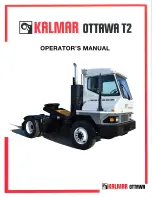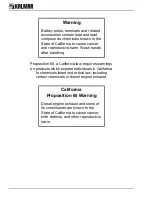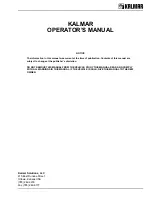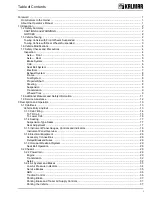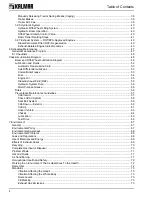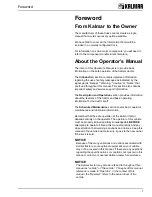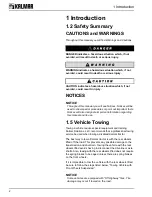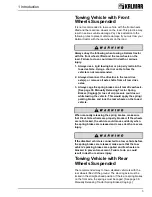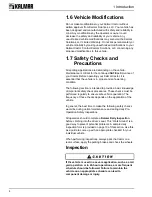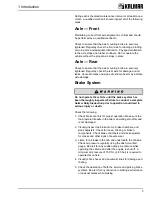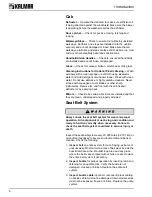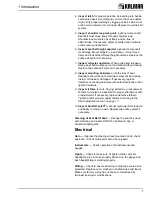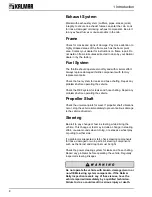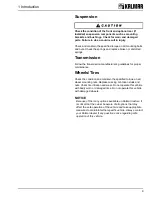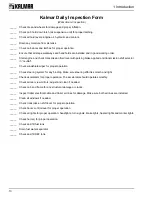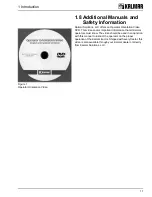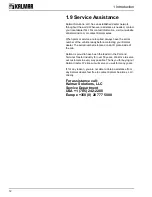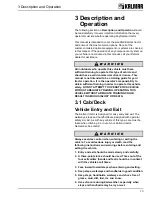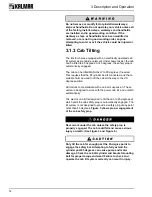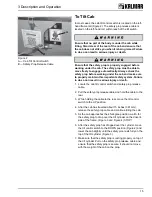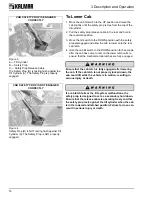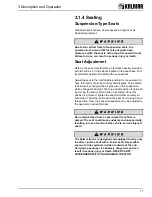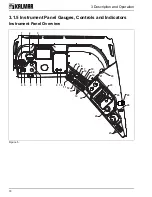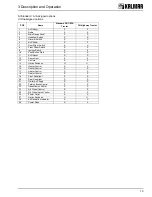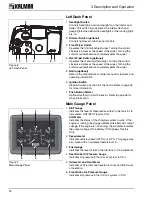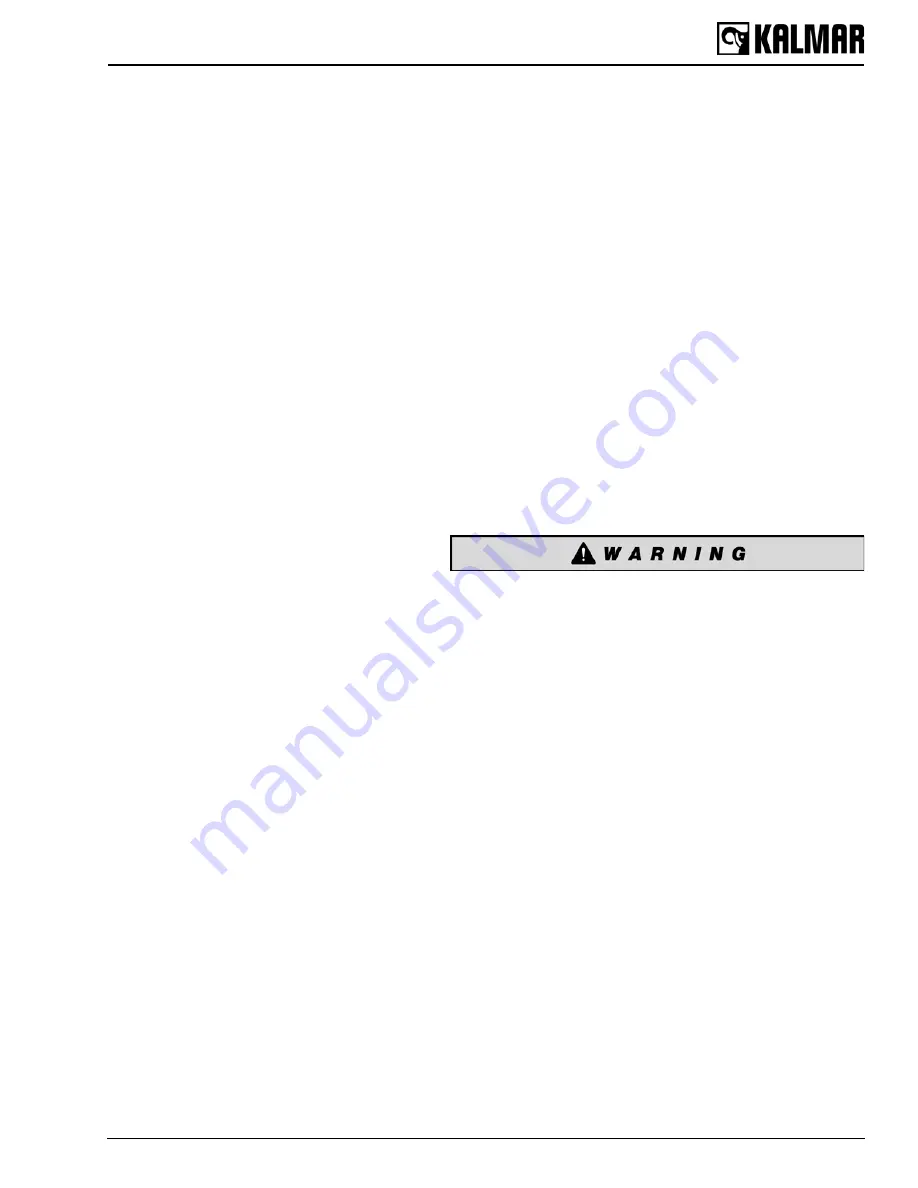
1 Introduction
5
During each scheduled maintenance interval or at least once a
month, a qualified mechanic should inspect all of the following
areas.
Axle — Front
Maintaining correct front axle alignment is critical and should
be performed by a qualified mechanic.
Check to ensure that the axle mounting bolts are securely
tightened. Regularly check the front axle for damage, binding
or worn parts, and adequate lubrication. Pay special attention
to the axle stops and rubber snubbers. Do not operate the
vehicle without the proper axle stops in place.
Axle — Rear
Check to ensure that the axle mounting bolts are securely
tightened. Regularly check the rear axle for damage and oil
leaks. Unusual noises and signs of extreme heat may indicate
axle damage.
Brake System
Do not operate the vehicle until the brake system has
been thoroughly inspected. Failure to conduct a complete
Kalmar Daily Inspection prior to operation could lead to
serious injury or death.
Check the following:
1. Check brake controls for proper operation. Make sure the
foot-operated treadle in the cab is operating smoothly and
is not damaged.
2. Visually inspect the brake drums, brake chambers, and
slack adjusters. Check for loose, missing or broken
components. Check brake chambers and slack adjusters
for cracks and other signs of severe wear.
3. Listen for air leaks in the cab and underneath the chassis.
Check air pressure regularly using the dash-mounted
gauge. Be alert for any sudden drops in pressure while
operating the vehicle and after the engine is shut off. A
minimum air pressure of 70 P.S.I. (4.83 bar) is required to
operate this vehicle.
4. Visually check hoses and pneumatic lines for damage and
chafing.
5. Check the operation of both the service and parking brake
systems. Be alert for any reduction in braking performance
or unusual noises while braking.

